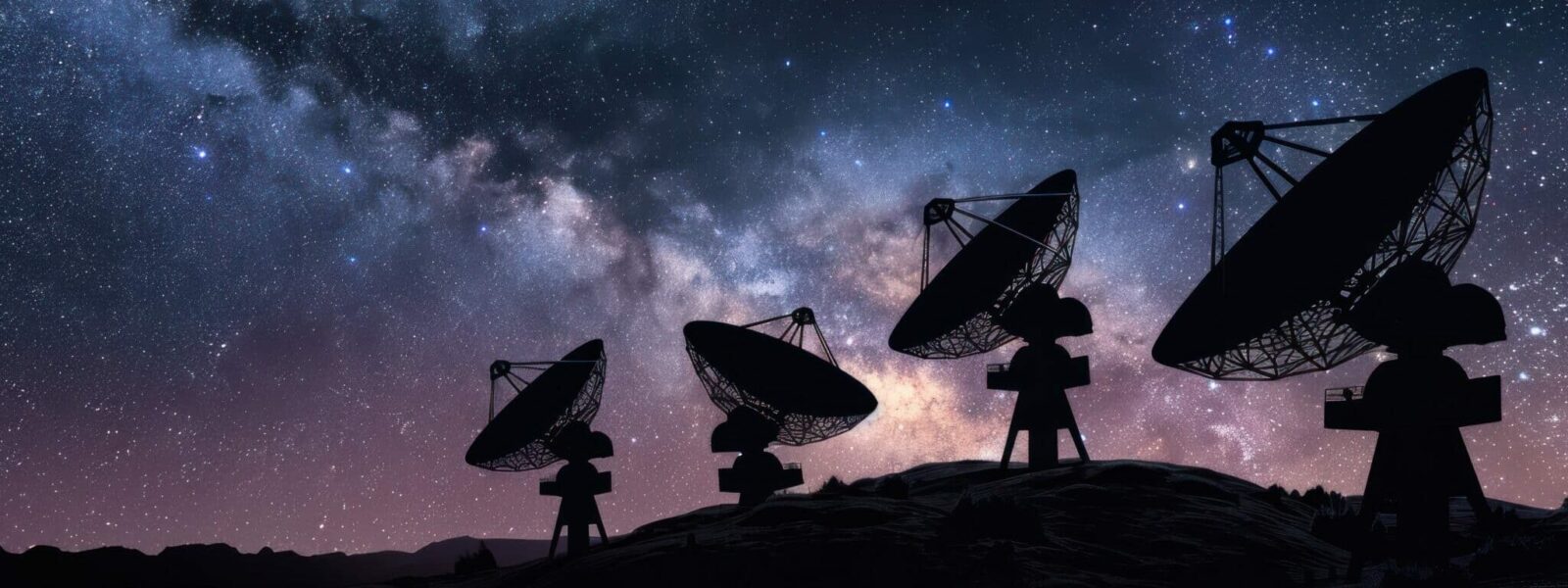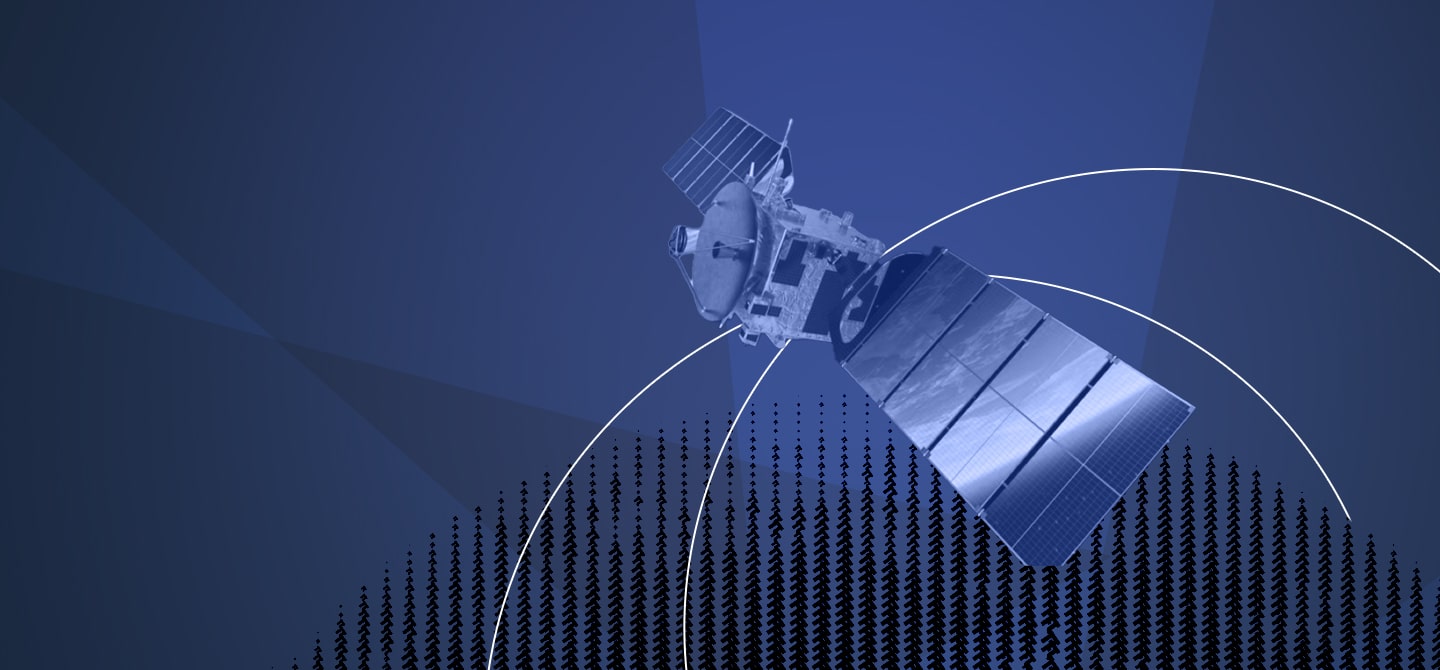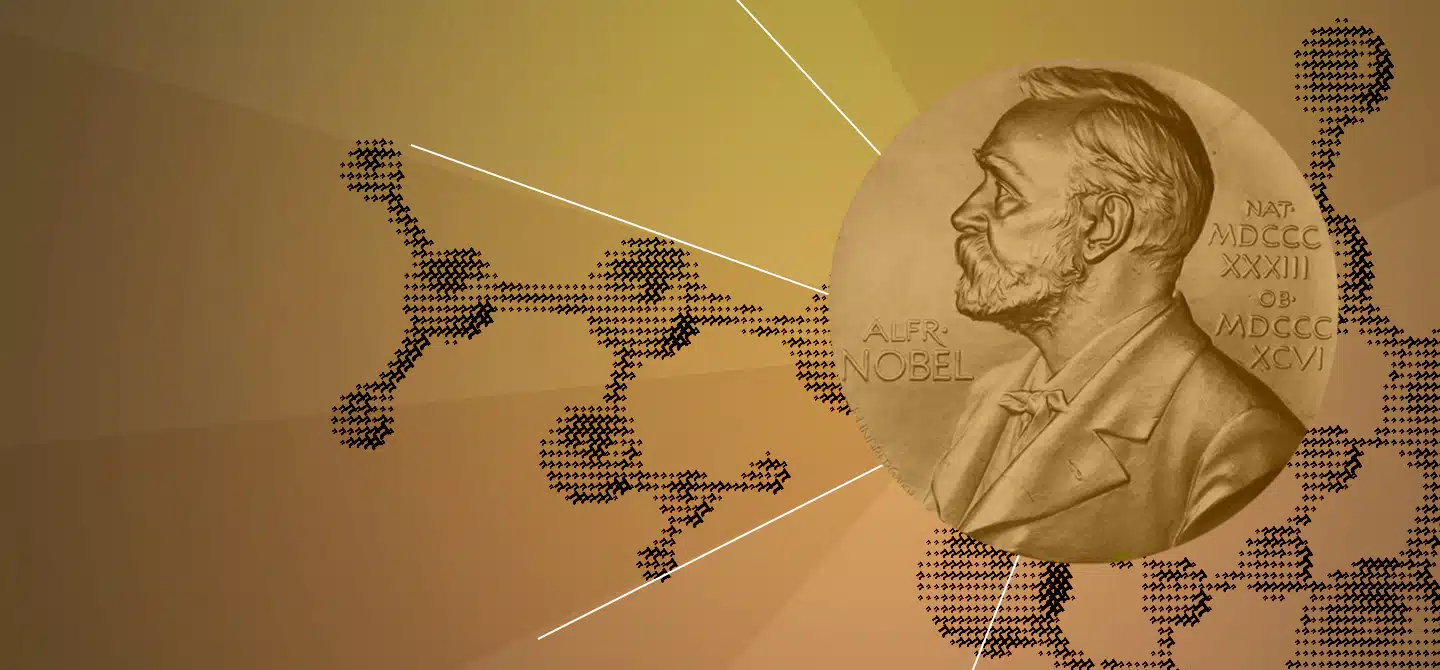Starlink: low-earth orbit satellites could ruin radio astronomy
- The growing number of satellites launched into low Earth orbit is seriously disrupting astronomical observations and space studies.
- The signals emitted by these satellites are interfering with astronomical observations at different wavelengths.
- Satellite operators want to reduce out-of-band emissions from their satellite systems, but these efforts have not yet been implemented.
- To obtain the full spectrum of a satellite's electromagnetic emissions, expensive infrastructures must be built and, often, the companies launching the satellites do not take responsibility for these.
- Starlink satellites pose problems such as radio contamination and complicate the study of the transient radio sky.
The growing number of satellites being launched into Earth’s low orbit is severely disrupting astronomical observations and, as a result, space studies as a whole. This is the latest warning from researchers at the Paris Observatory and the Nançay Radio Astronomy Observatory. Without effective mitigation strategies, particularly through collaboration between astronomers and satellite operators, the consequences for radio astronomy could be disastrous, they say.
It has long been known that signals emitted by satellites interfere with astronomical observations across different wavelengths. In optical astronomy, satellites orbiting the Earth reflect sunlight, creating bright streaks, or flares, in telescope images. In radio astronomy, global navigation satellite system (GNSS) satellites can contribute to radio interference, probably through so-called ‘out-of-band’ emissions.
What did you observe during your study on the impact of low-orbit satellites on astronomical observations?
Xing Zhang. In our study, we noticed that SpaceX’s second-generation Starlink satellites are emitting very intense out-of-band emissions (with flux densities exceeding 500 Janskys, Jy) that light up the night sky in the radio frequency range. These emissions are starting to complicate our astronomical observations.
Indeed,Starlink aims to provide global Internet coverage with no delay between communications. This requires satellites orbiting at low altitude – typically about 500 kilometers – so that the signal travel time between Earth and a satellite and back is very short, on the order of tens of milliseconds. The problem with low-altitude satellites, however, is that they only see a small portion of the Earth at a time. This means that many satellites must be simultaneously put into orbit. Their number is estimated at over 42,000 – equivalent to the number of square degrees of the whole sky. On average, this translates to one satellite per square degree; a colossal number. Until now, we had something like a few thousand satellites in operation at any given time. But this number is growing rapidly, and Starlink is not the only player in this field: other potential large-scale constellations, such as OneWeb and Amazon’s Kuiper project, are also expected to contribute to the growing congestion in low Earth orbit.
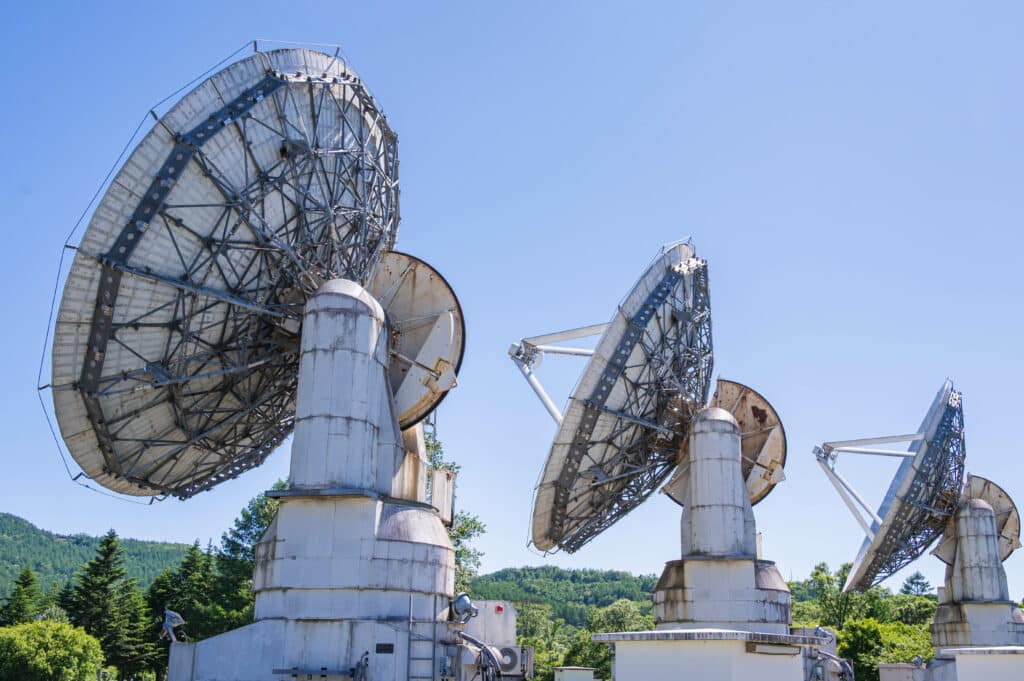
This congestion could quickly lead to what is known as the Kessler syndrome: there will be so much debris in orbit that subsequent launches will become less safe. The Earth will then become a kind of prison surrounded by debris polluting not only the optical wavelength range, but in the radio band too.
This is directly impacting the work we do at Nançay, which involves searching for signals from targeted exoplanets. Instead of these, we recently observed some objects moving across our radio images. We compared their trajectories with those of aircraft and satellites to find out what they were. It turned out that they were Starlink satellites.
Philippe Zarka. Normally, these satellites communicate at very high frequencies, of above 12 gigahertz, to send data. In principle, only radio astronomers working in this frequency band should be directly affected. But the problem is that the electronic components on board these satellites seem to produce their own radiation, which is outside of this band.
The first researchers to take an active interest in this low frequency band were those working at the LOFAR radio telescope. Their first publication on the subject appeared in 2023, when they reported a brief increase in noise at 150 or 170 megahertz as Starlink satellites passed through their field of view…
XZ. At Nançay, we wanted to test whether we could detect the satellites in our images and if there was anything in the 10 to 85-megahertz range. We did this using observations from NenuFAR, a network of low-frequency radio telescopes optimized for these frequencies.
In 2023, we didn’t detect anything. But a year later, we started seeing unusual signals on our images, so we decided to track the Starlink satellites and compare the moving objects on our images with these signals. We then realised what was happening: while the first generation of Starlink satellites also emit in radio bands, these emissions were not as bright at the frequencies we employ. The second-generation emissions, on the other hand, were much brighter, which explained the unusual signals and the source of the moving objects in our images.
There were two main versions of Starlink satellites: the early V0.9 to V1.5 models and the more recent V2 Mini satellites. It has actually been since the mass launch of the Mini V2 (around 40 satellites per week starting in 2023) that we have begun to observe a dramatic increase in light signals.
SpaceX and other companies are not necessarily opposed to finding solutions to the problems posed by low-orbit satellites, are they?
XZ. Indeed, their representatives have begun participating in conferences on radio interference, which shows they are open to dialogue with the scientific community. Some mitigation strategies have been tested, such as making satellites ‘invisible’ by temporarily disabling certain onboard systems when flying over radio observatories. However, these approaches are currently only realistic for large installations able to negotiate special agreements.
Some satellite operators appear to be seeking to reduce out-of-band emissions in future versions of their satellite systems. While this would be a step in the right direction, these efforts have not yet been confirmed or implemented in current fleets. In the meantime, many hundreds of satellites will continue to operate in low orbit until they deorbit, a process that typically takes between five and seven years. This poses a problem in itself, as one can imagine the quantity of debris generated when they do fall back to Earth.
The radio emissions from these satellites are 10 million times more intense than those emitted by the faintest celestial objects observable by LOFAR. They exceed the levels set by the International Telecommunication Union in the 150.5 to 153 MHz band allocated to radio astronomy, but since they are formally classified as ‘unintentional’ electromagnetic pollution, current legislation does not cover this infringement.
Why does current legislation not cover certain ‘unintentional’ emissions?
PZ. If these emissions were in a band that Starlink uses on purpose, only then would it be a legal issue. There are regular international conferences that define by mutual agreement how the different frequencies of the electromagnetic spectrum will be exploited. Some bands are reserved for defense, for example, while others are used for telecommunications, television and radio. In the bands reserved for radio astronomy, no one is allowed to emit. However, it turns out that when this emission is unintentional, that is, accidental, you are protected by law. This is obviously a loophole in the regulations. You could say that it is like intentional or unintentional homicide: these satellites are inadvertently ‘killing’ certain radio frequencies.
XZ. Perhaps these out-of-band transmissions were simply not anticipated during the development of these satellites. It is also possible that no thorough emission testing was carried out before launch. We just don’t know.
Are there any difficulties for when it comes to conducting thorough emission tests on satellites?
PZ. We agree that testing is no easy task. To obtain the entire spectrum of a satellite’s electromagnetic emissions, you have to put it in a Faraday cage and measure all emitted frequencies. Since Starlink satellites are quite large (several meters in diameter), a very large Faraday cage is required, which is obviously expensive to build. When we and other radio astronomers publish our findings, we are, in a sense, working indirectly for Starlink and other satellite companies, as we are essentially doing their testing for them. However, such preliminary testing should be mandatory and included in regulations: no one should be allowed to launch objects into space without exhaustive prior analyses.
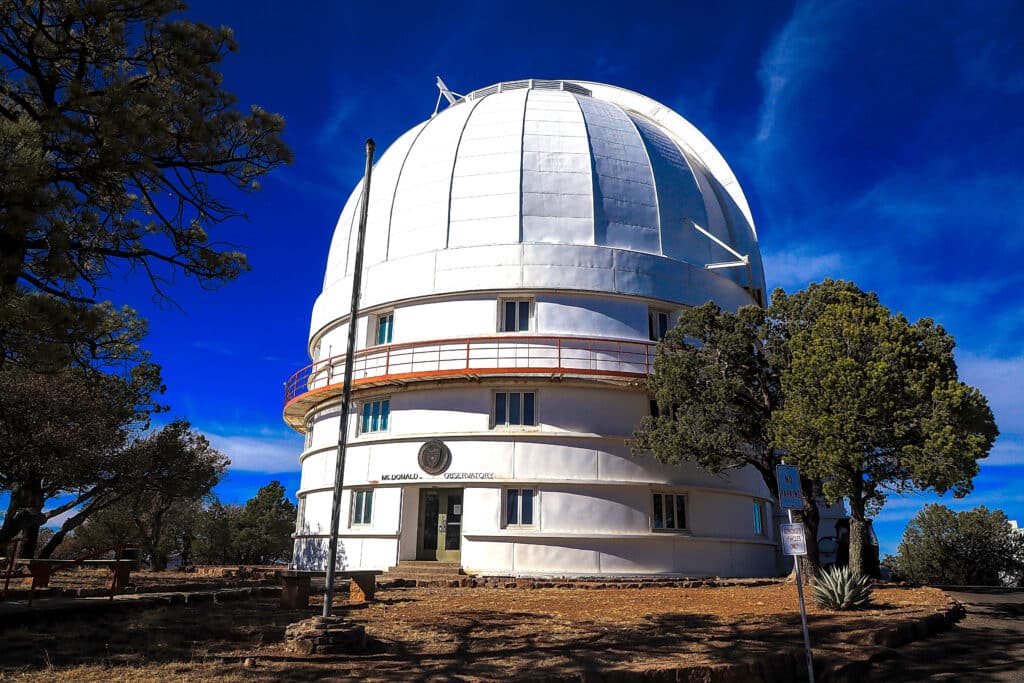
By publishing our results, we want to make astronomers aware that if they see any form of contamination in their radio images, they know where it comes from. Radio astronomy is progressing at a fast pace across all frequencies, and there is a lot of research these days on ‘transient’ events. These are phenomena that appear only for a short period of time and include cataclysmic events and explosions, fast radio bursts and pulsars, to name but a few.
We can make an analogy with optical astronomy here: when you are looking for stars or galaxies whose positions are fixed in the sky and streaks of light from satellites appear in the image, this is a problem, but you can ‘compensate’ for these trails. You cannot confuse them with the image of the object being observed. But, if you are observing transitory signals, that is, signals emitted by variable objects, you may of course confuse some satellite signals with the object you are observing. The same applies to radio astronomy images.
What problems do satellites such as Starlink pose?
PZ. Starlink satellites probably emit their radio pollution continuously, but since they only cross your field of vision for just a few seconds, you observe an event that actually lasts for a very short time when you look at certain objects. You therefore need to be extremely cautious and compare all the emissions you detect with those of satellites to eliminate them.
XZ. Initially, we thought we wouldn’t have any problems with polarised emissions like those emitted by exoplanets, because interference is mainly unpolarised. However, Starlink interference is also polarised, which poses a real problem and complicates the study of the transient radio sky. With NenuFAR, no matter where you look in the sky, you typically have a Starlink crossing your radio beam every 15 minutes. It makes it complicated for us, and the situation will only get worse in the future if nothing is done.
PZ. For me, this is one of the most serious problems with Starlink and other such satellites. People had already lost their sense of wonder of the sky and the stars because of light pollution in cities, but they could always go to the countryside or to a deserted place to rediscover that magic. With Starlink, there are trails of light all over the night sky. You could say that Starlink is stealing the dark sky from humanity. We no longer have a virgin sky. This, I would say, is a giant hold-up, and the whole of humanity is the victim.




